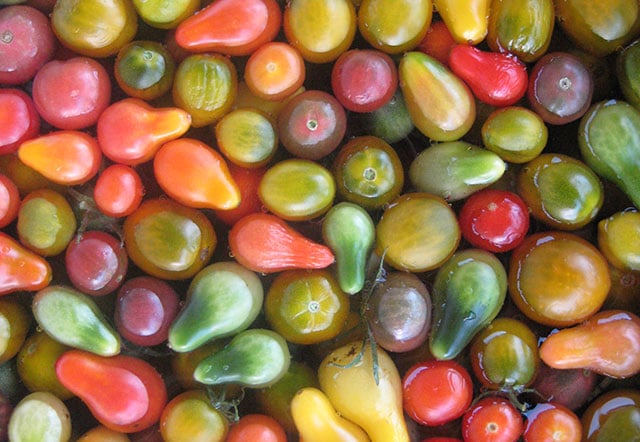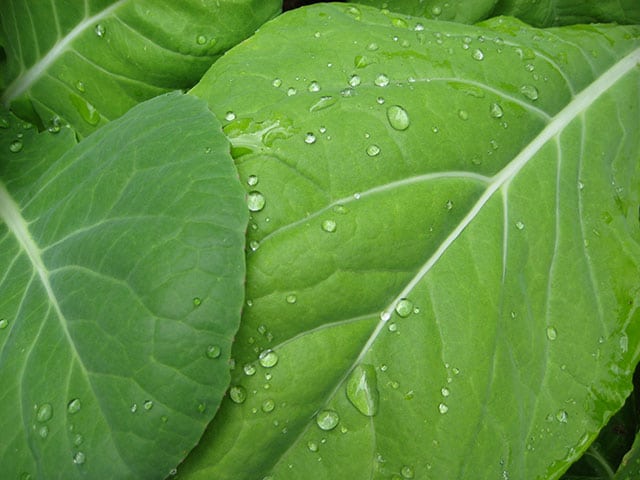Barbecues, salads and impromptu snacking are among the many joys of summer — and what’s better than grabbing what you need from your very own garden? But in the hot, hazy heat of July and August, do we really want to work hard at it? I think not. Given the choice of choosing something tough to grow or super simple, I’ll recommend the lazier route every time. Here are some powerhouse producers that will provide you with easy, yet exquisite, edible garden fare all summer long.

‘Romanesco’ zucchini
I’ve grown a lot of summer squash in my time and love them all, but I honestly can’t remember one that produces more prolifically that ‘Romanesco’. Not only is the harvest truly thrilling, the fruit is pretty on the plate. Sliced for a stir-fry or salad, it takes on groovy flower shapes. When grilled in long strips, the striped, ridged skin looks spectacular, particularly when an edible flower still clings to the end of a slice
While these zucchini grow so fast that it can seem difficult to stay on top of the situation, it’s best to pick them when they’re just six or seven inches (15 to 18 cm) long. This ensures your plants keep producing (prodigiously) and that these treats are at their tastiest and most tender.

Scarlet runner beans
Truly a magic beanstalk, scarlet runner beans are worthy of fairytale status. In my garden, these gorgeous vines twine up eight-foot (2.5-m) stakes placed teepee-style in groups of three, twisting around and around, then bursting into brilliant scarlet blooms.
Placed at the end of each of my raised beds, the bean teepees add architectural interest, and also act as a beacon to hummingbirds and bees who are in constant attendance of the bright-red blooms all through July and August and into September.
We enjoy the whole pods picked young and lightly steamed or stir-fried — like many generous vegetables, it’s good to remember that the more you pick the more you get. The yummy edible flowers are also good for salads or stir-fries.
It’s worth letting some of the pods mature so that you can pop out the pretty purple and black beans to dry for winter soups. When drying beans, hang onto the biggest of the bunch to plant for next year’s crop.
While these beans are easy to grow, there’s one important tip I would rather you not learn the hard way. Whether you start them in pots, as I tend to do, or in the ground, give seedlings some protection from the birds that love the beans as much as we do — they won’t hesitate to peck them out of the ground and leave you wondering what happened. I usually cover the soil with an upside-down plastic mesh tray (such as the type you bring home from nurseries when you buy bedding plants), held down by a small boulder, until the first set of leaves have developed. At that point, it’s safe to uncover your seedlings and let them reach for the sky.

Heritage cherry tomatoes
If your season seems too short to get a good harvest of burly Beefeaters, or you simply can’t wait to sink your teeth into a just-plucked tomato tepid from the sun, stay small when choosing your tomato varieties. ‘Black Cherry’, ‘Green Grape’, yellow ‘Coyote’, ‘Chadwick Cherry’, ‘Hawaiian Currant’ and ‘Yellow Pear’, along with other heirloom small-size gems, will keep you eating the delicate fruits every day. And while they do need a bit of a support to grow up, these fast and furious little tomatoes require less fuss and structure than heavier varieties.
Enjoy these gorgeous gourmet treats right off the plant, halve them for salads, throw them on to the barbecue or make a super-fast alfresco pasta dish.

Heat-hardy kale
As co-author of The Book of Kale & Friends:14 Easy-to-Grow Superfoods, I just can’t help myself, and include it here. Of course, this begs the question of what kale best withstands summer’s heat. While much of my kale breezes through July and August without a problem, particularly if shielded from the worst of the sun with shade cloth, kale is not a big lover of high temperatures, and having a heat-tolerant type in the garden is a good idea. Portuguese kale, a collard-like kale staple of Portugal, is mild and sweet and a stalwart through summer’s hot spells. It’s also cold hardy, so if you don’t already have this fabulous kale in your garden, start some now to enjoy it fall through to next spring.

The right basil
When growing basil outdoors, it’s important to choose both the right plant and the right place. Outdoors in pots, I’m growing Fairyherbs Wild Color basil and so far it seems to be holding its own, despite occasional attacks from hungry slugs and other critters.
My outdoor-grown, large-leaved sweet basil, on the other hand, is usually so riddled with holes that it doesn’t seem worth harvesting. Now, we mostly grow this delicate herb in the greenhouse or inside the house under grow lights. In fact, it’s surprisingly easy to grow basil right through the year no matter where you live — simply set up some indoor grow lights and watch it go. Inside or out, pinch the tops off for bushier plants.
Perennial herbs
I know I’ve said this before, but I can’t help but repeat myself: Wherever you have room for an edible groundcover, be sure to tuck in some thyme, oregano, sage and marjoram. Not only are these herbs bee-supportive and beautiful in the garden, they’re a delectable and healthy addition to any summer meal.
About Carol Pope
Carol Pope is co-author with Sharon Hanna of the newly released The Book of Kale & Friends: 14 Easy-to-Grow Superfoods, published by Douglas & McIntyre. She has 25 years of experience in editing, garden writing and organic gardening. As editor of GardenWise magazine for more than a decade, and editor of gardenwiseonline.ca, Carol focused on organic gardening in British Columbia. She was contributing editor to several gardening bestsellers and is garden series editor of more than 15 books and guides on organic gardening.
